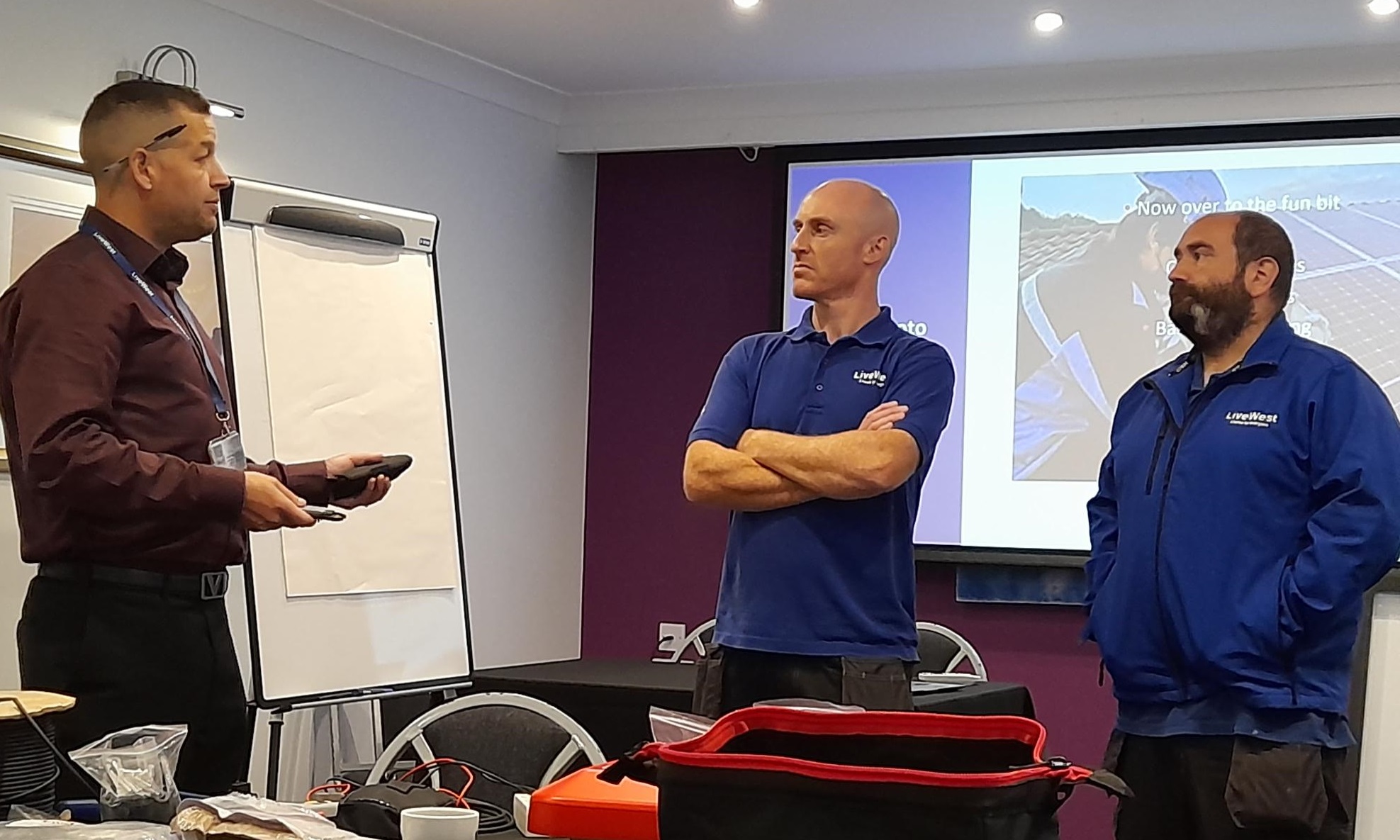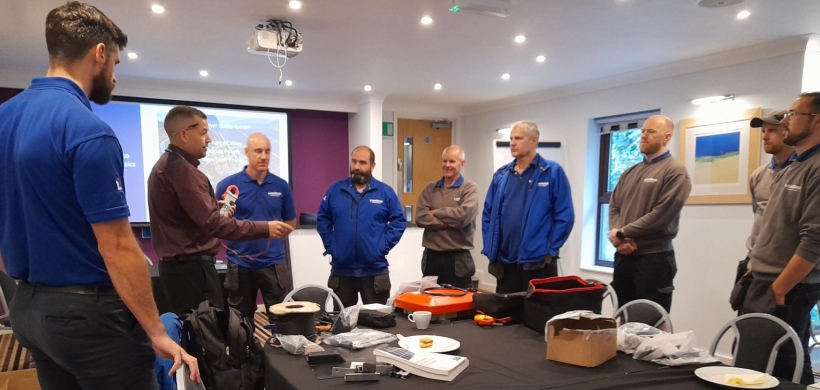With energy price rises having an impact on all of us, we are putting in place a number of measures to help our customers.
We have set aside £850,000 to support customers, including reducing the rent for those in less energy efficient homes, and allocating £360,000 to a new Tenancy Support Fund (TSF) to support customers struggling to pay their energy costs and rent.
As well as delivering financial support, we have, for some time, invested in a Renewable Technologies team who visit customers in their homes to help make adjustments which will reduce fuel consumption.
John Praoline is our Renewable Technologies Manager and leads a team of nine to work with customers to enhance the energy efficiency of their homes.
The work of his team supports our Cby28 project, which aims to bring 8,000 of our worst performing properties up to Energy Performance Certificate C by 2028, two years ahead of the government target.
The £38m investment underlines our commitment to reduce our carbon footprint, make our homes more affordable to live in and improving the energy performance of our homes.
The Renewable Technologies team visits our customers’ homes to give energy advice, and to install technology, where appropriate, to enhance the thermal efficiency of a property.
We have installed approximately 1000 air source heat pumps over the past four years and are continuing to help retrofit approximately 250 homes every 12 months.
Removing inefficient heating systems and replacing them with the latest technology available is reducing fuel consumption in customers’ homes at a time when bills are set to rise.
John Praoline said: “There are cases where heat pumps might not be suitable. For a property that has wooden front and back doors we might decide we want to put in loft insulation and upgrade the UPVC rather than the heat pump. Loft insulation can save customers between £90 and £150 a year and that is why we adopt a fabric first approach.
“Before we begin looking into the wide range of low carbon and renewable technologies on the market — all the way from solar PV to heat pumps — it is important we ensure that the fabric of our existing buildings are sufficiently thermally efficient to accommodate and optimise the efficiency of these new technologies.
“Fabric First is about striving for the highest possible levels of energy efficiency in the fabric of buildings, in order that the need for heating systems is massively reduced. Fabric First looks to improve its material construction to regulate temperature better and reducing a building’s carbon footprint.
“This means considering issues such as improved insulation, eradicating thermal bridging and refining airtightness for walls, floors and roofs to reduce heat loss.”

Instead of out-sourcing work to improve the energy performance of customers’ homes, our Renewable Technologies team has been expanding so we can make cost-effective improvements to our properties.
Since taking this work in house, we have seen a marked increase in helping to reduce fuel consumption for our customers. Before the team came together, we might see 50 to 100 call outs a week and we have reduced that to less than 20.
John added: “We tailor what we do to suit people’s different requirements. Even with two properties next door to one another, they are always different. You have to treat each home independently to see what is most suitable.
“It doesn’t matter whether the home is 100 years old or 10 years old. All the team are well versed in all areas of renewable technologies and our focus is on support for customers. If a customer works nights, we can change their system to suit their lifestyle.
“Some customers might have a medical condition which means they might need a constant 23 degrees so we might introduce a new heating system. We weigh up each property in their own right and it is not a one-size fits all.
“Rather than air source heat pumps, we might fit solar PV panels and solar thermal for hot water.
“We use a lot of QC codes, so when a customer moves into a new home and has a smart phone, they are sent a link and can go straight to YouTube to show them their heating system and how to set it up. This has massively reduced call outs.
“Some customer will save between £300 and £600 by setting up their system correctly so there are huge savings for people.
“But not everyone has access to smartphones and so we introduce other measures to suit the customer. We visited a lady in her 80s recently and she wasn’t regulating the temperature of her home properly, so we put a simple marker on her thermostat for the optimum temperature to heat her home.
“We all love our jobs because we can play a part in helping to reduce costs for customers.
“A classic enquiry we get from customers is that their radiator is getting too hot. We explain to customers how the heat pumps work lower flow temperatures so you need a higher flow rate to achieve the same desired temperature.
“You can have a comfortable temperature in your home at 21 degrees and it is about education and support. For customers who might have had storage heaters or a solid fuel burner in the past, we explain to them how they should use their system rather than cranking it up.
“The way I explain it is that it is like driving your car in second gear. You will get there eventually but it will cost you twice as much in fuel.
“A lot of our properties are fitted with Mechanical Ventilation with Heat Recovery (MVHR) units. This allows for the heat from stale wet air that is being extracted from the building via bathroom/kitchen, to be transferred into the fresh air which is simultaneously being brought into the building.
“So in theory it's like opening a window without losing any heat, therefore reducing the heating requirements of the property.”
